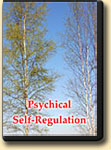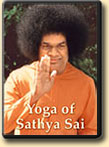The Highest Yoga
|
Articles:
|
On YogaThe word Yoga means Mergence of an individual human consciousness (soul) with the Primordial Consciousness (Which is called also the Creator, God-the-Father, Adibuddha, Tao, Allah, Ishvara, Svarog, and by other names in different human languages). The Path to this Highest Goal and concrete steps and variations of advancement along this Path — all this is also denoted by the word yoga. This term is identical to the Latin word religion. Among the directions of yoga there are, in particular, the following: — Jnani Yoga — the Yoga of wisdom: studying the nature of existence and the theory of spiritual growth; — Karma Yoga — the Yoga of right actions: dedication of one’s activity to God, to the Evolution of the Universal Consciousness, which goes on, in particular, in individual souls of embodied people; selfish motivation of this activity must be excluded; — Jala Yoga — the practice of ethically, biochemically, and bioenergetically optimal nutrition; it is important, first, because we — for successful spiritual growth — need healthy bodies, and, second, because the consciousness grows of the energies supplied to the organism with the food; it happens thanks to the processes of the sublimation of food energies inside the body; of course, one should grow the consciousness not of coarse energies, which separate us from the Primordial Consciousness, but of subtle ones; the use of alcohol, nicotine, and other psychedelics harmful for the health of the body and consciousness is inadmissible; — Agni Yoga — Teachings given to people by Divine Teachers through Helena Roerich; it represents a powerful call to people to begin spiritual search and spiritual self-development, to seek the guidance of the Divine Teachers — the Highest Spiritual Hierarchs, to seek Mergence with the Primordial Consciousness; however, the concrete methodology of attaining these achievements was not described by Helena Roerich: she was not interested in such methods; — Bhakti Yoga — an aggregate of methods for forming in oneself the emotional love for the Creator; it includes ritual forms of worshiping Him; but one should understand that realization of the goals of Bhakti Yoga is not possible without, first, the development of the organ of emotional love — the spiritual heart; and, second, in order to learn to love the Creator one has to learn first to love His Creation; — Kriya Yoga — the path of ethical and energetical purification of oneself and “washing away” from oneself — with the help of meditative methods — everything non-highest, everything that veils the Highest Deepest Divine Essence of man (the Atman or Higher “I”); the term Kriya Yoga was introduced by Great Divine Babaji; Kriya Yoga was spread then by Mahasai, Yuktishvar, Yogananda, and now — by us; it is important to emphasize that full realization of the programs of Bhakti Yoga and Kriya Yoga is preached now by the Avatar of our time Sathya Sai Baba. — Laya Yoga — is actually the same thing as Kriya Yoga; laya means “dissolution”: dissolution of the individual “I”, individual consciousness — in the United “I” of the Creator and Absolute; the emphasis is put on the development of oneself as a spiritual heart, on the purification of the body, mind, and consciousness, on feeling the Harmony, Love, Subtlety, and Infinity of the Divine Consciousness, on being aware of Its Guidance, and then on Mergence with It; the lower “i” in this case is substituted with the Higher “I”. So, on the spiritual Path there are three important directions of human development: intellectual, ethical, and psycho-energetical ones. The latter can be subdivided into the following three main steps: — Hatha Yoga — a preparatory stage, which includes the initial methods of making the body healthy, mastering concentration of attention and preparation of the energy structures of the body to further important stages of work; — Raja Yoga — its methods result in full cleansing and purification of the systems of chakras and main meridians of the organism; they also help to achieve purity and harmony within the entire energetical cocoon, which surrounds human body; — Buddhi Yoga — a system of methods for meditative self-development outside the body and cocoon; it allows one to realize fully the Highest Goal: cognition of God in all His Manifestations and Mergence with Him. * * * All people differ among themselves by the following main criteria: a) the psychogenetic age — the full age of a soul in a line of its human incarnations, and b) the ontogenetic age — the age in the current incarnation, which defines to a significant degree one’s capability of treating adequately the incoming information. Depending on this, a person desiring to go the spiritual Path can choose for oneself the methods of spiritual development which are the most adequate for the current moment. Only to those, who have mastered the ethical and intellectual components of the spiritual Path, it would be appropriate to begin the work on psycho-energetical transformation of oneself. In particular, it is important to note that people who have not switched completely to the ethically correct nutrition, i.e. that which excludes completely products made of meat or fish, should not attempt mastering the methods of Hatha Yoga and, especially, Raja Yoga and Buddhi Yoga. Otherwise, the coarsening of the consciousness takes place; this leads one not to the Primordial Consciousness but in the opposite direction. Krishna in the Bhagavad Gita said the following concerning the choice of the adequate methods of development for oneself: 12:8. Direct your thoughts to Me, submerge yourself as a consciousness into Me — verily, then you will live in Me. 12:9. But if you are not able to fix your thoughts steadily on Me — try to reach Me by practicing Yoga… 12:10. If you are not capable of doing constantly Yoga exercises, then dedicate yourself to serving Me, performing only those actions which are needful to Me — and you will reach Perfection. 12:11. If you are not able of doing even this, then seek Mergence with Me by renouncing the personal profit of your activity; restrain yourself in this way. * * * In conclusion, let us point out the main milestones of the higher stages of Yoga — i.e. of Raja Yoga and Buddhi Yoga. And let us pay attention to the full accordance of what was said above — with the Teachings of the Divine Teachers: Thoth-the-Atlantean, Pythagoras, Krishna, Jesus Christ, Babaji, Sathya Sai Baba, and Others. Main Milestones of Raja Yoga1. Mastering the relaxation of the body, mind, and consciousness. 2. Psycho-physical exercises, which lay the foundation of the correct development of the emotional sphere. 3. Cleansing and development of the chakras. The priority in this work has to be given to “opening” and development of the chakra anahata — the initial container of the spiritual heart. 4. Work on cleansing and development of main medians (middle meridian, sushumna, vajrini, chitrini, front meridian, microcosmic orbit), cleansing of a partition between sushumna and a middle meridian. 5. Cleansing of energetical cocoon surrounding a body. 6. Refinement of consciousness, in particular, through the methods of art. 7. On this base — the psychical self-regulation that helps the practical mastering of ethical principles, suggested us by God. Main Milestones of Buddhi YogaRemark: in Buddhi Yoga, the work is performed on corresponding natural landscapes, including places of power. 1. Expanding of the spiritual heart. Development of the arms of the spiritual heart. 2. Mastering the Mergence with the Holy Spirits in the meditation Pranava. 3. Mastering of the state “non-I” in the Divine spatial dimensions (Nirodhi). 4. Mastering hesychia — inner quietness. 5. Strengthening the “power center” of the organism (forming the hara — a united center of the chakras of the lower dantian; the methods for its further development). 6. Meditation Volcano. Becoming acquainted with the Divine Fire; cleansing and treatment of the body with this Fire. 7. Becoming acquainted with Manifestations of the Divine Teachers in the form of Mahadoubles. Communication and Mergence with Them. 8. Work on “unarchiving” the Kundalini. 9. Forming Dharmakayas. 10. Practical studying of the structure of the Absolute. The meditation NAM. 11. One’s own Mahadoubles. 12. The meditations Wall, Pyramid, and Temple. 13. Cleansing the “segments”. 14. Mastering Paramatman. 15. Development of the ability not only to enter the state of Mergence with the Primordial Consciousness in Its Abode but also to come out from It into the Creation with the purpose of helping the incarnate beings. 16. Final treatment of the matter of the body with the Divine Fire. * * * God calls this Path, laid and thoroughly tested by us under His direct guidance, the Divine Way of Spiritual Heart or the Straight Path. One can walk along it even further… Vladimir Antonov, Ph.D. (in biology) |
|












